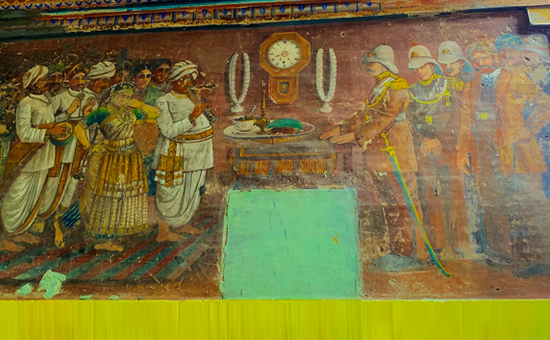Uma Maheshwar temple is located in the silent village of
Konerirajapuram a few kilometres from the temple town of Kumbakonam, in the
Mayiladuthurai district in Tamil Nadu.
This temple is known for its festivities- the ‘Swamy Purapadu’ where the main deity Lord Shiva will be carried on shoulders outside the temple as a sign to meet and greet the villagers. It is located in the midst of paddy fields making the drive to the temple a pleasant one. No one will realise the beauty of the temple unless they visit it. It doesn’t host a magnanimous architecture outside, but on the inside intricate details of the temple make it a worthwhile.
The alluring beauty of the Bronze
statues of the Nataraja is the main attraction to the temple. It is also called
as Thirunallam. The Nataraja idol is
a unique beauty here in this temple as it has relics on it like moles,
scratches like how they are on a human body.
This temple is known for curing big diseases like Leprosy as the Shiva here is in the form of ‘Vaidyanatha’ or the one who cures diseases.
Leaving behind the various stories of the temple like how it was once submerged then it was brought back to its form or the story about how The Chola king Kadaraditya Cholan and his wife were highly religious and had asked the Sthapathi (An architect, a carpenter or builder) to make a Lord Nataraja's statue in five metals or ‘Pancha Loha’ and how due to their dissatisfaction in the work the lord appeared to save the carpenter.
What really caught my eye was a
painting there. A painting whose colours were slowly fading crying to be
preserved. A painting which needs to be viewed and researched about more. A
painting where British officers may be police were offering their services to
the temple or were a part of the festivities. This is very unlikely as
generally the temples were only looked upon as money banks to the invaders.
 Credit - my gallery
Credit - my gallery
Then after a small interaction with
the priests there I learnt that the Britishers were thanking the people of the
village and the lord as one of them who was diagnosed with leprosy had
completely cured from it. Another story that one of the priests there told was
the British officials started taking part in the
festivities after they were cured of an illness that struck one of them.
I was really awestruck as this sort of
a history needs to be documented. The painting on the wall is definitely be
200-300 years old and it is to be treasured. The details on the painting are so
intricately done with the depiction of temple dancers during the festivities,
the clothes of the villagers and the British are so well defined. The clock on
the wall, the Britishers offering in a Thamboolam.
It was a fascinating moment for me to see such a wonder which is worth
preserving!!!
To see pictures of Temples
of Kumbakonam